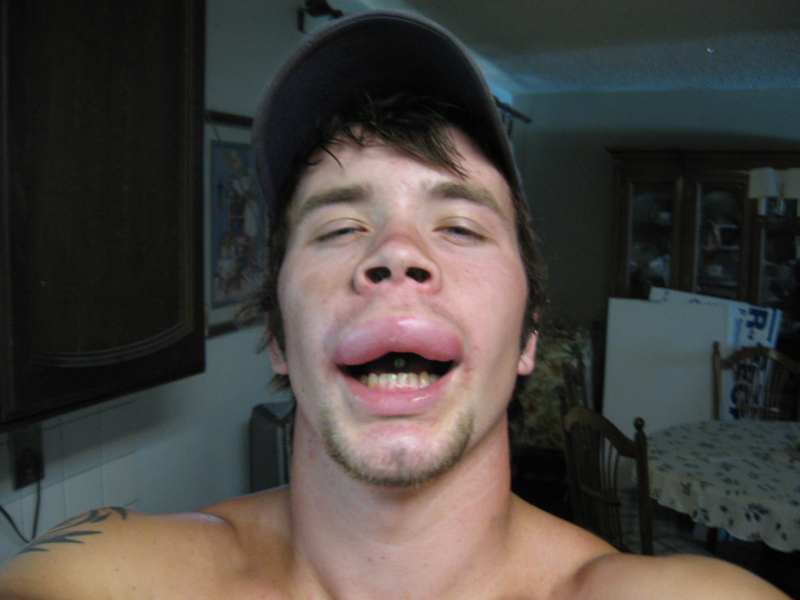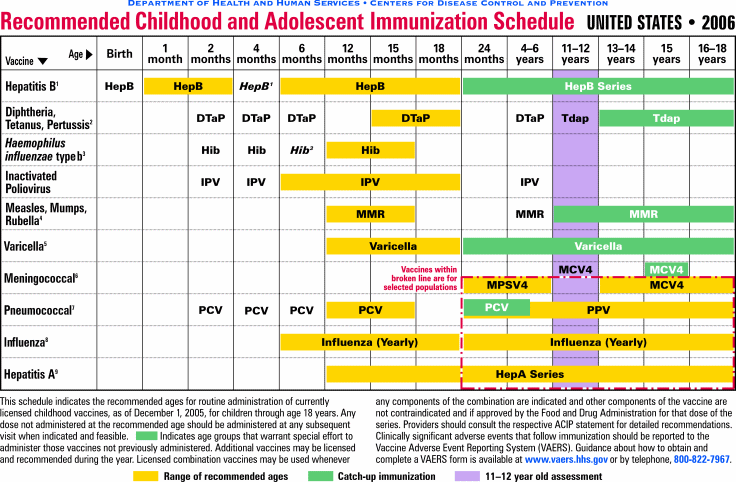review:
* Effects from release of granule chmicals may be local (poison ivy, "hay fever) or systemic (anaphylactic reaction to bee sting)
* General inflammation
* smooth muscle contraction:
- constriction of respiratory pathways (shortness of breath)
- cramping of GI tract (often also diarrhea)
* capillaries dilate and become leaky (fluid into tissues)
- swelling, hives, burning and itching


* glandular secretion
- Mucus = runny nose
- Tears = watery eyes
* why?
- Expel antigen bearing structures from body
- worm and protozoa antigens are similar to allergens
-immune system mistake?
***(hygiene hypothesis: exposure to parasites early in life will use this response to get rid of worms and protozoa, but if you body never get expose to them then your body will react to allergens because they are similar to the antigens of worms and protozoa) ****
Table 18.1
* Effects from release of granule chmicals may be local (poison ivy, "hay fever) or systemic (anaphylactic reaction to bee sting)
* General inflammation
* smooth muscle contraction:
- constriction of respiratory pathways (shortness of breath)
- cramping of GI tract (often also diarrhea)
* capillaries dilate and become leaky (fluid into tissues)
- swelling, hives, burning and itching


* glandular secretion
- Mucus = runny nose
- Tears = watery eyes
* why?
- Expel antigen bearing structures from body
- worm and protozoa antigens are similar to allergens
-immune system mistake?
***(hygiene hypothesis: exposure to parasites early in life will use this response to get rid of worms and protozoa, but if you body never get expose to them then your body will react to allergens because they are similar to the antigens of worms and protozoa) ****
Table 18.1
Use
of Immunology – Vaccine Production Table 17.2


Why are vaccines given if not 100% safe?

Example: Measles,
Mumps, Rubella
Risks associated with disease:
-Measles
-Measles
- death 1 in 3000
- pneumonia 1 in 20
- encephalitis 1 in 2000 (deafness, blindness, mental retardness, etc)
* Rubella: congential rubella syndrome 1 in 4 (birth defects)
Risks associated with vaccine:
* Encephalitis or allergic reaction: 1 in 1, 000, 000
Mercury compound removed 20 years ago: no autism change in results... autism is diagnosed about the same time they are getting vaccine but no direct link, but could be linked....
Mercury compound removed 20 years ago: no autism change in results... autism is diagnosed about the same time they are getting vaccine but no direct link, but could be linked....
Vaccine Production (PRINT OUT and complete Vaccine Type
Comparison Chart)
* Provide exposure to antigen without disease
* Whole cell vaccines: Entire cell, with multiple antigens present to give strong reaction
* Attenuated = live (weakened but not dead; Pasteur)
- Multiple antigens = multiple types of memory cells
* Provide exposure to antigen without disease
* Whole cell vaccines: Entire cell, with multiple antigens present to give strong reaction
* Attenuated = live (weakened but not dead; Pasteur)
- Multiple antigens = multiple types of memory cells
- reproduce in body to amplify response - highest # of memory cells
- slight danger of infection/ reaction
(example: Koch's failed tubercolis vaccine, live Polio virus, post Polio syndrome....)
Vaccine type
|
Effectiveness (high to
low) & why
|
Risk (high to low) & why
|
Whole cell attenuated
|
high effectiveness, multiple antigens and copies
|
low risk of infection, risk of negative reaction
|
Whole cell killed
|
high effectiveness, multiple antigens, no copies
|
no risk of infection, risk of negative reaction
|
Soluble Subunit
|
low, individual antigens
|
no risk of infection, less risk of allergic reaction *unless you are allergic to adjuvant*
|
Recombinant whole cell attenuated
|
||
Recombinant whole cell non-pathogen
|
||
Recombinant soluble subunit
|
Whole cell vaccines:
___live whole cell of pathogen____injected into your body
Attenuated = ___live but weakened___
Effectiveness and why:
* multiple antigens = multiple types of memory cells
* reproduce in body to amplify response = highest # of memory cells
* multiple antigens = multiple types of memory cells
* reproduce in body to amplify response = highest # of memory cells
Risk level: Slight danger of infection/ reaction
Killed or inactivated vaccines:
Effectiveness and why:
* No reproduction, but still multiple antigens
* No danger of infection, but reaction possible
* No reproduction, but still multiple antigens
* No danger of infection, but reaction possible
Risk level:no risk of infection, risk of negative reaction
******diagram of whole cell vaccines....flu shot = peplomers not the whole cell.****
******diagram of whole cell vaccines....flu shot = peplomers not the whole cell.****
Soluble antigens (subunits): __subunits____ injected
into your body
Effectiveness and why:
* less effective because only response to only single antigen injected
* response to soluble antigens may be lower than cell bound antigens
* less effective because only response to only single antigen injected
* response to soluble antigens may be lower than cell bound antigens
Adjuvants
Risk level: no danger of infection, lower chance of reaction
****** newest vaccines are manipulation of genes********

Recombinant vaccines:
created by_removing genes for production of pathogen's antigens_____ Fig. 17.2
Attenuated (pathogen): safer
Effectiveness and why: cut out genes that makes it virulent,
(example capsule gene cut out...gene c.. enzyme... toxin.. whatever dangerous component was, you will get fewer memory types because you took out some genes that made some antigens but they will reproduce and make copies) assured to be safer, relative high effectiveness with higher safety
(example capsule gene cut out...gene c.. enzyme... toxin.. whatever dangerous component was, you will get fewer memory types because you took out some genes that made some antigens but they will reproduce and make copies) assured to be safer, relative high effectiveness with higher safety
Risk level: much lower then live unattenuated pathogen
Whole cell (non pathogen): harmless cell reproduces in body with antigens
Effectiveness and why: you take a nonpathogenic cell (like yeast) and give it a gene (like gene a or b that is non pathogenic) to the nonpathogenic cell. the cell will produce the antigen, the cells will reproduce... you will not get a lot of memory cell types but you will get a lot of memory cells for that antigen...
Risk level: no risk of infection, low risk of allergic reaction
Soluble subunit: harmless cell secretes soluble antigens
Effectiveness and why: less effective give you one memory cell type, no reproduction so no copy of memory cell type, cheaper and safer then real pathogen vaccine
Risk level: low
Newest (coming soon?)
vaccine type: DNA vaccine? the antigens will be expressed by your own cells? insert plasmid with antigen-producing gene into your own cell- produces antigen inside the body.
Common vaccines used
today: Table
17.2
* group activity: List the stages of the HIV life cycle
- note: it's a retrovirus, so it has 7 stages
- it is an unusual virus, so one of the stages isn't finished until after it leaves the host cell, which is that?
1. attachment 2. penetration 3. reverse transcription 4. incorporation 5. synthesis 6. assembly 7. budding/ release
*which is not finished until after budding? assembly/ maturation step? it is when protease makes capsomere
drug targets.... expand upon it... draw the life cycle but right now we will talk about the history...
* group activity: List the stages of the HIV life cycle
- note: it's a retrovirus, so it has 7 stages
- it is an unusual virus, so one of the stages isn't finished until after it leaves the host cell, which is that?
1. attachment 2. penetration 3. reverse transcription 4. incorporation 5. synthesis 6. assembly 7. budding/ release
*which is not finished until after budding? assembly/ maturation step? it is when protease makes capsomere
drug targets.... expand upon it... draw the life cycle but right now we will talk about the history...
Topic 8a: HIV Disease and AIDS
(Acquired Immune Deficiency
Syndrome)
Global Impact of HIV / AIDS:
* people living with HIV.... 33.4 million
* New HIV infection in 2008... 2.7 million
* Deaths due to AIDS in 2008... 2.0 million
parts of the world most impacted by the HIV/AIDS pandemic: subSahara Africa (1.9 million)
2nd: South and Southeast Asia (different strain and much more aggressive)
Deaths due to AIDS, 2011 chart..

* New HIV infection in 2008... 2.7 million
* Deaths due to AIDS in 2008... 2.0 million
parts of the world most impacted by the HIV/AIDS pandemic: subSahara Africa (1.9 million)
2nd: South and Southeast Asia (different strain and much more aggressive)
Deaths due to AIDS, 2011 chart..

Origin of HIV-1
* Most similar virus: SIV (simian immunodeficiency virus) in primates
* Most similar virus: SIV (simian immunodeficiency virus) in primates
Probably entered humans from similar___SIV (simian immunodeficiency virus)___
in __Sub-saharan Africa___(geographical area) around
__1959___ (year)
–What
activity probably led to species-jumping?
* contact between infected primates (primary food source) and humans allowed species jumping
* contact between infected primates (primary food source) and humans allowed species jumping
No comments:
Post a Comment